Viewpoints of Europan 14 Actors
E13/E14 Inter-Sessions Forum - Badajoz (ES) - Debate
Viewpoints of Europan 14 Actors
Alain MAUGARD
President Europan France
The Europan 14 topic is "Productive Cities" – in the plural. And so far, everyone has been talking about "the Productive City". Yet, the topic is much richer than "the Productive City" – it bears some questioning on the meanings of the question of the "Productive City", which can greatly vary according to the climate, the culture and the degree of maturity of entering the 21st century. Many examples have been given on industry, but the first question is the one of the fields of production of the city. Industrial goods are not the only ones; there is also the so-called “new craftsmanship”, the “industrial craftsmanship”, with 3D-printing systems and so on, which began with the 21st century. There is also the services – a city producing services, this is production as well; and we are also talking about the way this production of services is done – whether they are shared or exchanged changes everything in the city’s mode of operation and of life. There is also the energy – if a city produces parts of its energy or not; and if it does, the city should then have intelligence networks, smart grids, exchange is going to take place, the block chain will start. There is also the issue of recycled products – a city produces waste and if it recycles waste, then waste becomes a resource; circular economy is therefore also part of the question of the productive city. Then, the problem is a change of society, because this is what we propose with Europan 14: it is not so much about production –or the productive aspect, generally reduced to industry– as it is about the changes it implies for the city – the city should accept a change of essence of what the city is: the city should be a place of production. And it should be a place of production with all this variety of productions that should also have more autonomy. The ambition is therefore enormous: we are talking about the producer and the consumer getting closer with local jobs and with the knowledge of who is producing and who is consuming, with by the way very interesting games where one can be a producer and then a consumer the next minute. And this game also takes place in services. As far as energy is concerned, when you produce energy, you also consume energy. It therefore seems to me that what is at stake is a total modification of the way the cities operate.
But there is another question for us, urban planners: it is the question of the scale of the productions we are talking about. You gave very interesting examples of the industrial production. Productivity led to concentration, and we therefore have to deal with large scales. So how to introduce a large rock into a city that only has small areas? It does not work in. So the large rock went out of the city. The same happened for commercial malls, superstores and logistics areas. Still, it seems to me that one of Europan 14’s urban issues is the reinsertion of smaller rocks, even of sand –which is smaller production units, i.e. services, goods, food production, etc.–, in the heart of the cities. This seems to me to be a fantastic issue. And then, the question about whether we should see this production or not falls apart; if we are dealing with the social-economical project of the city, then everyone will be happy to be able to see this production.
María Ángeles LÓPEZ AMADO
General Director of Architecture, Junta de Extremadura (ES)
I wanted to give some reflections on the topics we are discussing and the examples that were given. First, the issue of Productive Cities for Europan 14 seems to me very appropriate. We are here in a region that is very productive on different aspects. As far as History is concerned, this region has maintained its heritage. An example of productivity is the place where we are now – a bastion that was build between the 16th and the 19 cent., which was then used as a bull ring –with a new use– and which was then turned into a palace of congress, reactivating this area of the city.
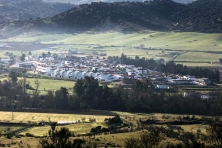
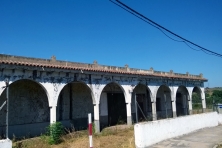
On the other hand, for the Junta de Extremadura, the productive city is directly linked to the social question. The situation is paradoxical: there are many people in need of housing and uses, yet there are many empty houses on this territory.
And third, Europan 14 is an opportunity for Extremadura. All the examples that were shown are examples of cities. Still, Extremadura is a very large production territory that is rural, with 75% of villages with less than 2,000 inhabitants. We are facing a decreasing and ageing population. So our productive city is a small village, a village that can act as seeds to be able to study those new productive uses. The region of Extremadura has always ‘fed’ bigger cities with population, where people from Extremadura settled. I believe that today we should turn this concept the other way round, and make of our region a place where people come back. This is why Europan 14 is so important. And I would also like to receive territorial keys.
Isabel GIRAULT
Architect, urban planner, Genève (CH)
I wanted to bring some views from Genève. First, this very rich debate is raising many ideas in many directions, on different scales and about different cultures, so we can indeed consider the problem in many different ways. It is very important to know how to take advantage of the assets of a territory to reintegrate them in productivity or make a new productivity emerge on a city or a territory.
Still, I wanted to feed the discussion with regards to what can be done in Genève as far as urban planning is concerned, with a real challenge on the question of the conservation of low-value activity in a city where space is used to create value, and more and more economical value. And this is a fundamental question that connects to the examples of Brussels, Amsterdam and Barcelona. In the end, it is quite easy to integrate high-value activity, all these functions of connectivity, it’s wonderful, they can be integrated easily – but even urban agriculture can be integrated easily: you can easily find the areas to treat with urban agriculture in the city, as long as you solve the problems of contamination of course, as well as the problems of society, as the actors who will take up this activity are different. Yet, the industrial activity remains an important issue, as it is not compatible with the very rules we have defined – and in Genève, there is a major problem with this: for example a coachbuilder cannot work on the ground level of a building because the environmental rules do not allow it! So how to solve this? How to mix this all? And how to maintain an activity on a territory that, despite its added value, cannot find its place anymore, although people need it for its social function? How to manipulate this material of industry and activity?
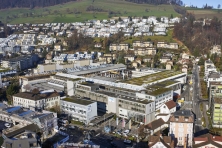
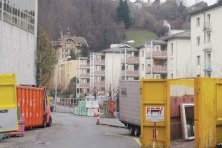
In Genève, we introduced a new working method. Space is strictly limited, the Canton is very small and we have to find new solutions. Today, industrial hotels are appearing here and there. I saw that the same happens in Amsterdam and Brussels, where people are trying to mix functions and have industrial hotels; but it also means to lift the trucks inside the buildings. And then a new actor appears: the real-estate actor, who produces several layers of industrial activity within a same hotel, but acts as an intermediary between the industrialist and the final client. So a new development structure appears, with a cost to cover. So the question is: how to equalize this with the other functions in the city? This has to be considered carefully beforehand, but it is very important to have a look at this problem so that the cities that cannot necessarily afford funding the industrial activity can do so anyway. Rich cities should be able to afford it, but when we talk about Barcelona and the Poblenou, the craftsmanship that is introduced cannot be considered as heavy industry. So we are confronted to a problem: where do we put an activity that requires us to accept nuisance?
Jaume BARNADA
Director of Strategy and Urban Sustainability, Barcelona (ES)
I wanted to give more precision on how we see this topic in Barcelona. The most productive district in Barcelona, the one that produces the most economy, is the city centre – El Ensanche. And it is the case since its creation 150 years ago. Which means that the place where we produce the most and where the most economy is generated lies within density and diversity. And this is the key for us. We are not at all in favour of the separation of uses; we believe the city is a mix of density, compactness and diversity. And this is where the activity is produced. What we can indeed question is which fields to produce in a city centre. In the case of Barcelona, that would be the small industry –which already exist and perfectly works; the services of course, as we are a big capital; the knowledge and everything it produces; of course there could not be a car production plant in the heart of the city, but an office that designs cars could. And the last element is craftsmanship and small activities that cities have always had. I don’t see any difference between the ‘hipster’ craftsmen and the ones from the time of my grandparents. There have always been shoemakers in Barcelona, the only thing that changes is the colour of the storefront. The main debate could be: how do the uses of the economic activities gather within the city? How can they be made compatible between themselves? And finally, how to protect housing in the centre of the city, or how to introduce housing in the productive territories?
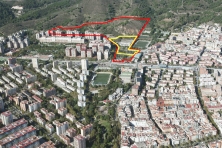
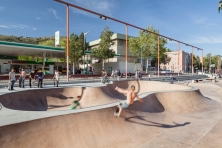
Francis KLEITZ
Mayor Guebwiller (FR)
We are one of Europan 14’s small cities, certainly one of the smallest cities. The site we propose is a significant part of the city. We expect from Europan to know to which extent can the role of the urban architect go. Today, Guebwiller is quite attractive as far as housing is concerned; but as a former textile city, it has lost most of its industrial attractiveness, which we would like to recover, at least in part. Guebwiller lies halfway between two bigger cities; yet it plays a certain role as a local centre for a territory of about 60,000 inhabitants. At the same time, the city lies at the entrance of a valley and is a place where people from the valley can resupply, where they can find jobs or have a cultural life. The site we propose should bring back a certain balance so as to avoid that the city turns into a bedroom community and people go to bigger, yet more distant cities to work. There is a whole district to reconsider; so up to where can the urban architect go to contribute to a general attractiveness that goes beyond housing and bring back economic activity? This is the challenge we are expecting from the future projects.
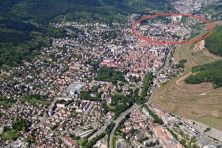
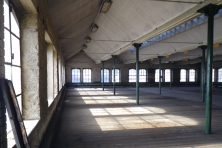
Jonathan WOODROFFE
Architect, S333, Europan Nederland Board Member
For me it is very important to set very clear ambitions in terms of what the Europan competition will achieve. We should try to understand where the limits are in achieving this new urban condition; understand what will be very interesting if the young architects really look at determining factors –which has much more to do with planning regulation, building control– and see to what extent those questions need to be re-raised to enable certain types of new urban condition to exist. There are some very interesting young offices now that are working on the European level, really studying building codes and basing their work on evidence-based research. So for me it is really important to be very realistic and at the same time have a very clear understanding of where the limits are in our current building and planning systems. And as the new generation of architects produces new knowledge and really questions the Brussels bureaucracy and looks at ways to open up, on a policy level, new conditions to create these ambitions that we want to achieve.
Roch BRANCOUR
Deputy-Mayor in charge of Planning, Angers Metropolis (FR)
Regarding our expectations and to go on on what has been said before, we are expecting realistic, tangible ideas, even techniques, much more than concepts, and at the same time, we want that these ideas be at the meeting points of 3 elements. First, ideas of programs of course – basic ideas on the types of production, activity, etc. then, a method – new and innovative ideas that are precise enough on the methods to use to work on the planning or the evolution of the site we are interested in. And third, a state of mind – these ideas should embody a state of mind that for us, in Angers, should consider how to put the individual at the heart of the planning project.
According to me, the way to lead the project should consider the identity of the territory. What I mean by identity is the element that is there to place the inhabitant, the worker, the individual at the crossroads of their history –their past and future– and at the crossroads, maybe more spatial, of the place they are on –the territory itself– and its surrounding territory. It is therefore very important that these ideas be very concrete and do not get blurred by any abstract concept, that they be ways to incarnate a method, a program, but also a link with the identity of the territory.
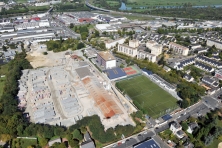
Jean-Etienne SURLÈVE BAZEILLE
Deputy-Mayor in charge of Planning, City of Bègles (FR)
The territory we are proposing lies along the banks of the Garonne River. The productive activity onsite is still important, with a paper mill that, a century ago, was turning the forest of the Landes into pulp and is now turning bricks from Eastern Europe into pulp. We are expecting interrogations, answers and parts of dreams. The question is: do we have to keep the activity? The answer is: yes, definitely. Does for example this paper mill cover too much territory, with almost tens of hectares? Could we reduce the activity while keeping it and using the space differently? What do we do with the banks of the beautiful Garonne River, which are now covered by a motorway until Bordeaux’s future train station?
We can see in these questions that we are also talking about cities in need of a certain part of dreams. Everyone wants a pleasant city, with gardens, beauty, etc. But when we talk about industry, they all say "No, it’s filthy, it stinks, it makes noise…" They want to see it somewhere else. But this it our ambivalent, very ambiguous side – we do not want to see anything, "not in my backyard!" And what we would like for this territory, it is to have as much ambition as Barcelona and build nice buildings that are easily recognisable and dissonant with regards to the Bordeaux of the 18th cent. But it is also to become part of the entrance to the metropolis. It can be to propose, in front of this majestic landscape, fabulous flats with large terraces; and then, maybe –as people have a nice place to live in– they will accept the industrial activity. And this is where the diversity will take place – to live better, to see better, and even if there is something that goes a little bit wrong next to it (with a smell or some noise), well then it will just be the counterpart. What we are expecting from the architects, it is to mix all these parameters onto this space and to bring answers that make us dream and make us want to implement them.
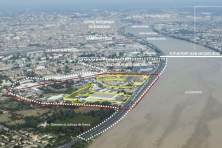
Julien HERNANDEZ
Elected Representative, City of Amiens (FR)
The site we propose for Europan 14 is in the activity area of Montière; it is very large and includes about 100 hectares, 40 of which being waste lands. I agree with most of what has been said before, especially when it comes to the idea of the ideal city. Amiens is the city of Jules Verne, for whom Amiens was this ideal city. It was at the end of the 19th cent., and the heavy industry had just settled there –in particular the textile industry, which made the wealth of our city. On the area we propose, there is the Cosserat plant, which combines different kinds of heritage – industrial, historical, but also the social memory of the workers who worked there in thousands, and who now see the plant go to the dogs and be abandoned. What we want there is the creation of connections for the district, which is currently completely landlocked, and which lies at the same time within a historical perimeter, facing Amiens’s Cathedral (listed twice on the UNESCO World Heritage), and within an exceptional natural perimeter.
So the idea is to create bridges with the close surroundings, but also a link inside this territory, while maintaining the industrial activity –which is nowadays rather craftsmanship– and trying to include quality housing and be able to say that on this place, we have the capacity to develop everything possible. We would like both these word to guide the architects: create innovation and quality on this territory.
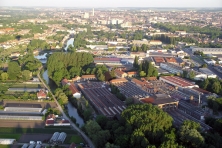
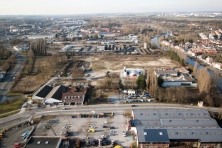
Virginia GIANDELLI
Architect, Vice-President Europan Italia
Many people come to work in Milano, which is Italy’s economic capital-city, and there are many innovative jobs. The city granted a lot of space to this activity, it opened its own public buildings for coworking. But although it gave the young generation many spaces to set up startups, hubs, labs and other innovations, it still did not manage to solve certain logistic problems like the quality of the Internet connection for example.
Regarding the question of urban agriculture, we do not really talk about "urban agriculture" of "family gardens" in Milano; we are actually talking about real agriculture: the city produces corn, they have cows, wheat, rice, etc. But what should we if we do not want that the citizens who are farmers within the perimeter of the city, with very nice farms, do not leave the city and leave the place to urbanisation? We have already prevented new building on the South of Milano, where we created an agricultural park, etc., but we will also give the farmers the possibility to sell their production. For some years now, the city has obliged school canteens to consume local products. And this is a way to give farmers a chance to stay where they are, within the city.
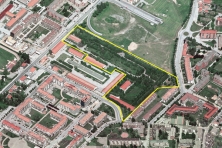
Lastly, I heard a city say: "We are expecting architects to give us ideas." But these ideas might be given to change the rules and standards. In Italy, many middle-size cities have an important heritage that they have to restore according to very strict rules. And if they do not restore it, then it is left unused and could be used as a squat. So this meeting between the cities and the innovative ideas from young professionals could help cross the line of rules and standards.
Didier REBOIS
Secretary General Europan Europe
We have reached an important turning point in the urban fabrication and nobody today seems to disagree with the introduction of productive activity in the urban fabric. But we have to consider, for each context, the activities that are connected to the type of production to include in the city, of course adapting ourselves to very different contexts. Many new uses are rising that are linked to urban productivity at different levels: some forms of industrial activities are compatible; there are new urban services linked to production; there is a new economy linked to knowledge, and another one linked to short-distribution circuits between production and consumption, etc. but I would like to conclude advising those who are about to work on the sites’ documentation to provide the Europan 14 participants with, not to just "get the issue out on the table". Many questions that were raised today are very interesting, but if you want relevant and innovative answers, you have to give the participants a certain number of parameter with regards to your contexts; you yourself have to take risks on the programmatic level; you could state your goals as far as the economic development of your sites is concerned, or even state the type of production expected on one site, but also the scale (in percentage) of occupied territory, with 15 to 20% productive activity? And also spell out how to get to a certain compatible mix between housing and productive activity.
The sites do not necessarily have to propose detailed programs, but rather structured programmatic frameworks on the scale of each site, as each context is very different. This is the key to receiving interesting answers from the participants. Because in Europan, 50% of the participants submit a project in a foreign country – an Italian can submit in Norway, or a Swiss in Spain. Therefore, the participants do not necessarily know very well the context in which to develop their project and you have to give them clues to understand it, in particular on the nature of the new production you are expecting and on the part it can take to be compatible with the city. I would say that receiving innovative ideas from the young professionals will mainly depend on the quality of the problematic and on the clarity of the goals that the cities and the sites’ partners will provide the participants with.
Disccover the viewpoints of:
- European cities
- winning teams
Back to the Introduction page